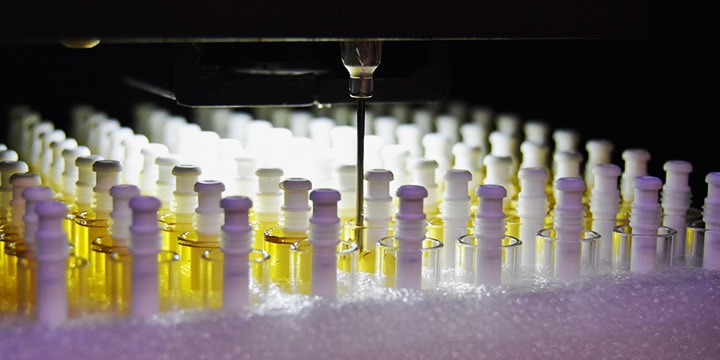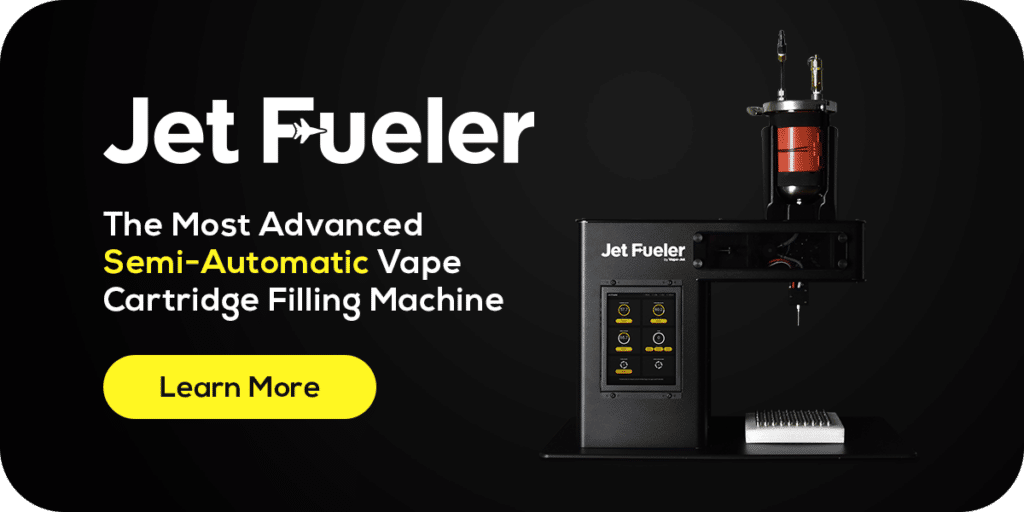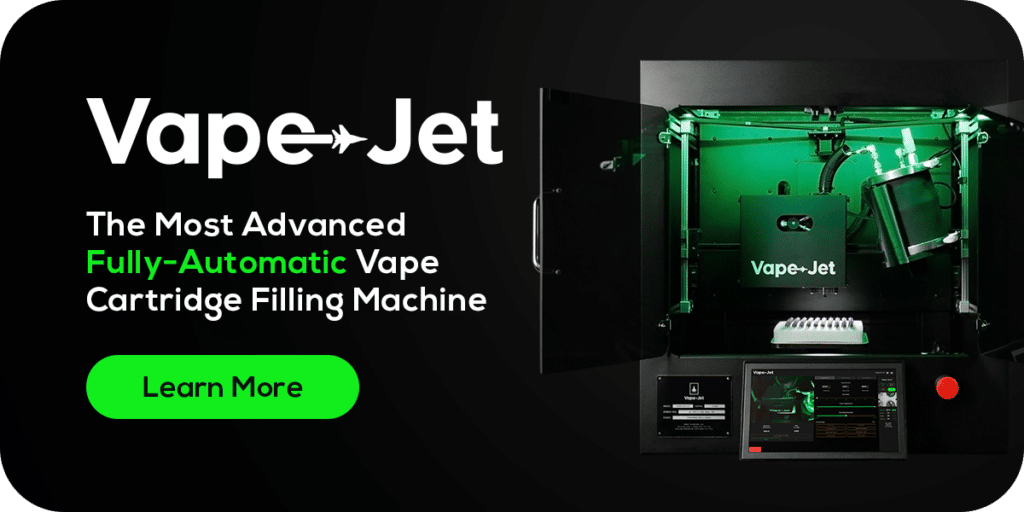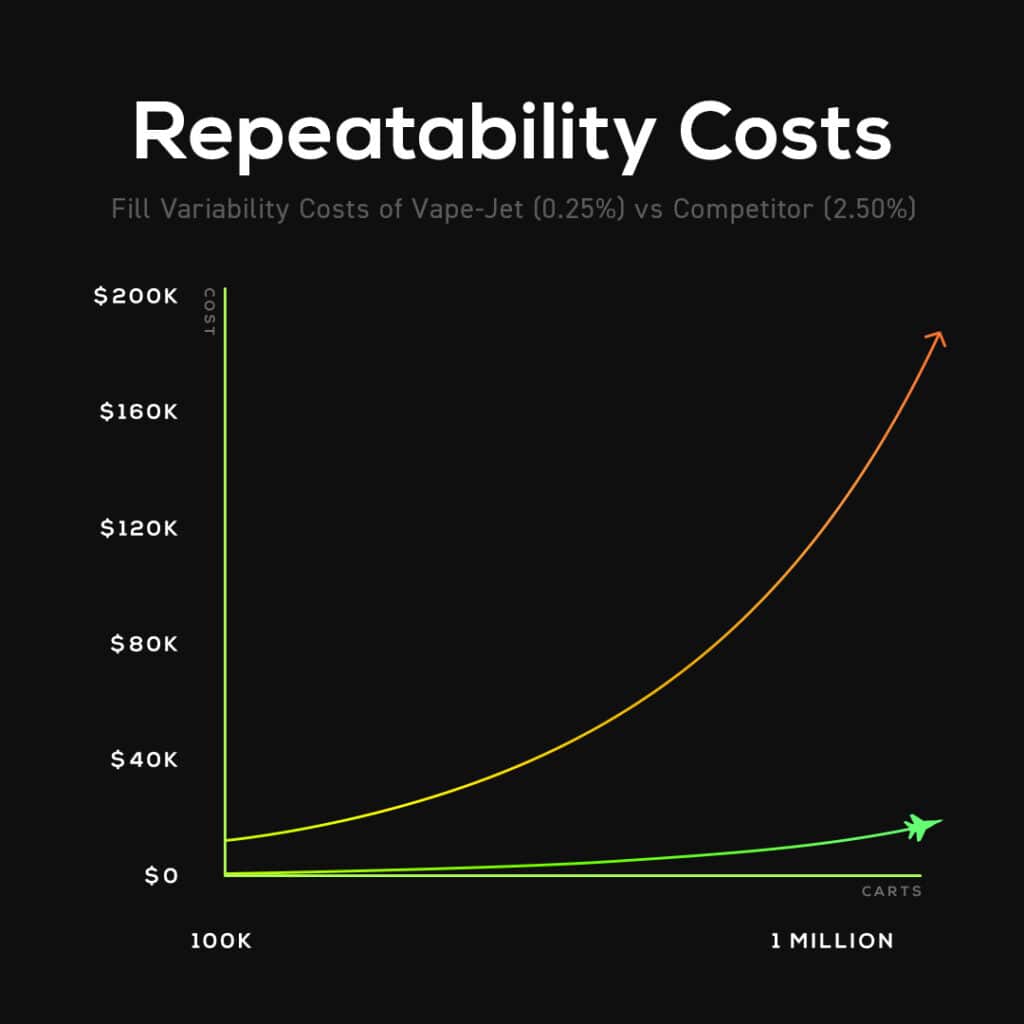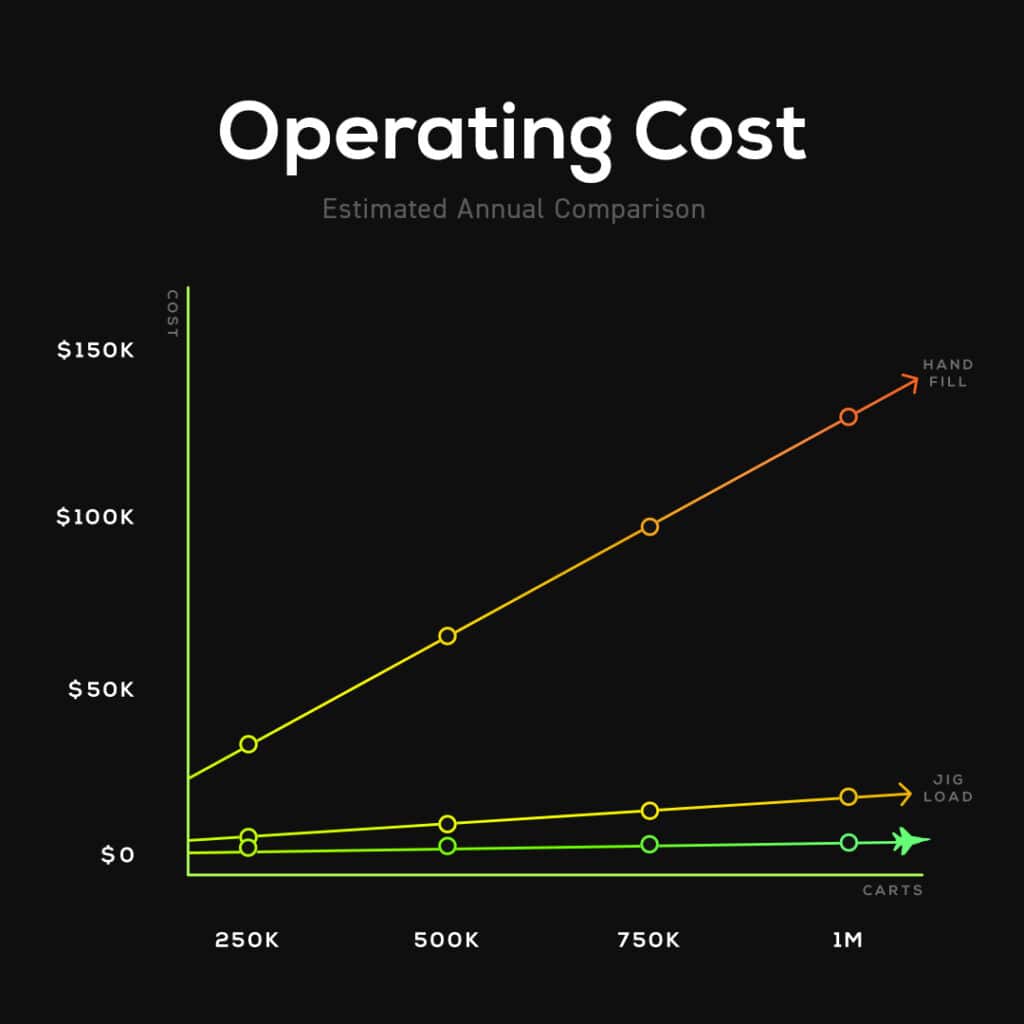Investment Analysis
Investing in Automation: A Technical Perspective
Businesses understand the importance of sustainable growth, but allocating investment capital can be a difficult process. At Vape-Jet, we believe in approaching these decisions from every angle with the best possible information.
In our previous article, “Investment Analysis: Is Vape Cartridge Filling Automation Worth It? (Part One)” Director of Sales Josh Maramba and CFO Brian Kuo outlined several key marketing and financial questions to consider during automation investment analysis. Although these questions are vital to new process considerations, they are only one part of your assessment.
With the help of COO Devon Reid and CEO Ryan Hoitt, this article expands on the technical considerations of your investment, showing how Vape-Jet’s technology reduces bottlenecks and labor costs while allowing you to reallocate resources and establish long-term security.
Chemistry and Workflow Considerations with Devon Reid
Although the mere mention of chemistry might give some business owners a migraine, resident chemist, engineer, and COO Devon Reid is here to simplify the implications of chemistry and workflow for growing businesses.
According to Devon, when manufacturing cannabis products, bottlenecks begin at the point of extraction and compound through the process to obtain finished goods.
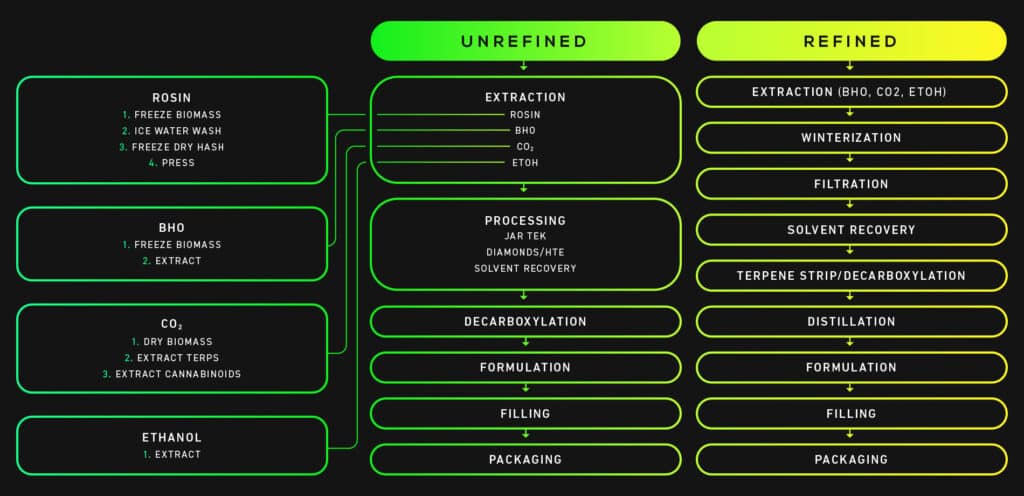
“[The] quality of finished goods flows from upstream processes,” Devon says. While unrefined products are less capital intensive, refined products “yield a more consistent end-product.”
“If formulation, filling, and packaging bottlenecks are roughly analogous for both workflows,” Devon says, “the major exception lies in the filling of unrefined products.” Filling with a refined product is more consistent because “extraction impurities are removed, and formulation with pure terpenes is precise.” On the other hand, “unrefined products are susceptible to bubbling upon filling, due to impurities and uncontrolled percentages of terpenes.”
As a result, refined distillate fills faster than unrefined product, while “unrefined workflows generally require more time to produce a product that can be filled.” For example, unrefined products like rosin are labor-intensive to extract, time-intensive to prepare for filling, and slower to fill.

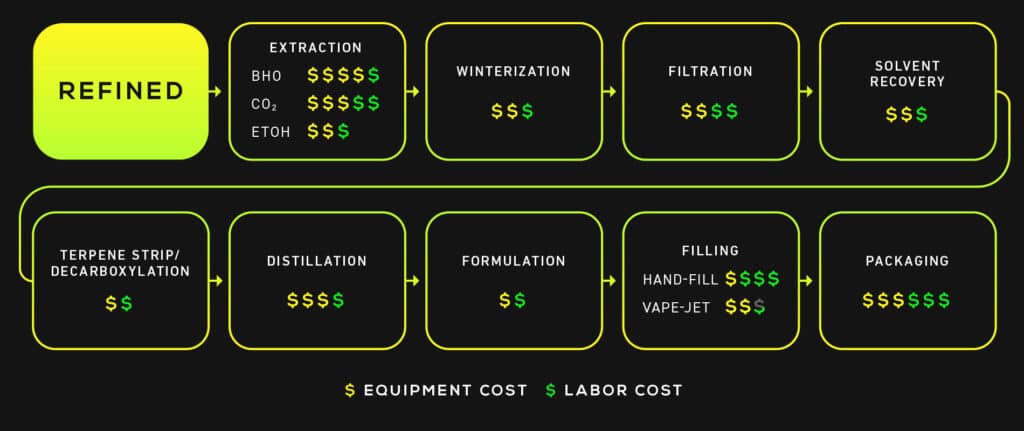
The solution demands a machine that can react to these highly variable products and workflows. Lucky for us, Devon has spent 10 years developing high-tech automated equipment to eliminate such bottlenecks. He affirms that “automation at any step of either workflow will alleviate bottlenecks and result in a more consistent product.”
Even though unrefined and refined workflows vary from place to place, Vape-Jet’s vape cartridge filling automation technology increases efficiency while decreasing variability, representing a reduction in bottlenecks across the board. With Vape-Jet equipment that you can “set-and-forget,” you can even reallocate labor to other tasks, boosting productivity without increasing labor costs.
Technical Considerations with Ryan Hoitt
When it comes to investments in new technology, CEO and developer Ryan Hoitt identifies three critical factors to consider: the hidden costs of automation, data collection and compliance, and the rigidity of new machines.
Reducing the Hidden Costs of Automation
The first hidden cost of automation lies in the training process. The cost of training personnel on complex mechanical automation machines can be high. However, Vape-Jet overcomes this hidden cost “by building the operating procedure into the user interface,” Ryan explains, “users always have the most up-to-date reference information available immediately, lessening the need for extensive training.”
Secondly, machine adjustments and worker changes lead to slowdowns in the production process. With most machines, Ryan notes, moving between SKUs can be costly and require operator institutional—or legacy—knowledge. If that employee leaves, the company is at risk of losing that knowledge. “With Vape-Jet’s saved profiles, changing between active configurations only takes a few clicks and requires no physical machine interventions.”
Finally, a prevalent but often ignored cost of automation is equipment maintenance. What happens when something goes wrong with your machine? Can you rely on vendor support? Will getting replacement parts add downtime and negatively affect your production output? “At Vape-Jet, we offer dedicated industry-leading product support with same-day response times and overnight shipping as standard in our support contracts.”

Data Compliance and Collection
With industry compliance needs constantly changing, it is essential to manufacture your products with compliant hardware. Powered by data reporting software, safe fluid paths, and clean-in-place procedures, Vape-Jet exceeds industry standards giving you peace of mind in the face of compliance changes.
Because manual data collection is “costly and unreliable,” Ryan highlights the importance of computerized data systems. The software in our Vape-Jet collects data from “automated points of inspection, then feeds that data to external systems, with labor cost reductions and increased accuracy.” With this cutting-edge software, you can integrate our automation equipment with your ERP system.
Machine Rigidity
Ryan encourages companies to distinguish between flexible and rigid automation. “Heavy investment into single-purpose machines which require extensive adjustments or retrofits to work with evolving product lines can trap you into a cycle of non-innovation.” Instead, flexible machines with remotely updatable software “will always win against rigid designs especially as SKUs and consumer needs evolve.”
In short, Ryan summarizes, “in a world of rapid technological change, highly specialized automation just doesn’t make sense.” Rather than curtailing innovation and making your business less agile with rigid automation technology, isn’t it better to invest in a machine that can update itself?
Invest in the Future of Vape Cartridge Filling Automation
With any automation technology comes new opportunities for reducing operating and labor costs, but Vape-Jet machines aren’t just any automation technology. We believe that filling a vape cartridge ought to be as dependable and intuitive as possible.
With state-of-the-art hardware, unparalleled customer service, and innovative software, our equipment stands alone. Our flexible fully-automatic and semi-automatic machines are designed to complement any workflow and bolster your business for the future.
Fill smarter than your competitors by investing in high-quality automated equipment from the start. Reach out to our team for a consultation to see if our automation solutions are the right fit for your new production facility or process.


